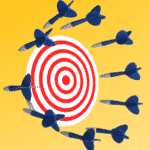Does your wellness business treat its marketing plan like a trip to the movies? See if this sounds familiar:
Monday: no plans for the upcoming weekend.
Wednesday: a mildly interesting movie ad catches your eye.
Saturday: no better ideas, so you finally decide on a movie followed by dinner…
But wait! No sitter, gas tank’s on empty, and no reservation at the restaurant.
Many wellness businesses – surprisingly, even large ones – treat their marketing plans like a trip to the movies. Their marketing is sporadic, with little advance planning or focused follow-up, often fizzling in an expensive yet disappointing outcome.
A marketing calendar is an exceptionally effective way to break this pattern. This tool helps you plan marketing events and link their costs to results.
Say goodbye to sporadic, unconnected promotions or advertisements sparked by the CEO’s late-night realization that “we haven’t done any marketing in a while!”
And not to worry – you can start your marketing calendar today. No need to wait for the beginning of a new year.
1. Show me an example of a marketing calendar!
Here’s a calendar with examples
plus an exclusive Radial template you can download and use in Excel.
Start by listing your planned activities on the left. Note the budgeted, or planned, cost in the next columns. You’ll update the actual cost of the initiative once it’s complete.
Now, move to the right and note your planned results. In the example, it’s the number of new small business clients you’re hoping for. Alternatively, you could note the increase in revenues that you’re hoping to produce. Again, you’ll update the actual results once you have them.
In the example, we’ve shown the costs and results for the program as a whole. However, it’s often helpful to break down the costs by task so that it’s easy to tell where your plan diverged from reality. For example, you might enter the design costs and the printing and mailing costs separately.
Then, put an “x” in the appropriate monthly boxes.
2. What factors should drive the timing of our marketing initiatives?
Consider the natural ebb and flow of activity in your community.
You may want to get local school calendars as well as holiday schedules for large local employers. Your Chamber of Commerce or local convention and tourism bureau can provide lists of upcoming conferences and other large events.
Consider specific seasonal influences on your business.
Ignore industry rules of thumb and focus on what’s true for your wellness business. Some wellness businesses experience seasonal lulls in the summer or during the November/December holiday season. Yet an outdoor fitness program may find that summer is a peak period. And of course, if you know that your likeliest customers are otherwise occupied in December, don’t bother marketing then.
Start marketing BEFORE your peak period.
For example, if you want clients in the summer, you need to start marketing before summer gets here. Otherwise, prospective customers have already made other plans.
If you market to businesses, keep in mind that very little decision-making happens in most corporations during November and December. If you wait to market then, you’ve already missed out on opportunities to get your programs and services including in the new budget year that starts for most corporations in January.
Include relevant health observances in your marketing calendar.
Health observances are a wonderful way to piggyback on someone else’s marketing investment, since governments and not-for-profits often spend heavily to promote these events.
For example, September includes America On The Move, Fruit & Vegetable Month, Ovarian Cancer Month, Healthy Aging Month, and many more. Just make sure you choose health observances that are truly relevant to your mission and strategy.
3. Watch for unintended spikes or gaps on your calendar
Once you’ve developed your draft marketing calendar, scan it for lengthy gaps in marketing activity. Say you’ve only got a couple of initiatives scheduled – one in February and the second in November. You’ll be going eight months with no proactive marketing, then squeezing two marketing initiatives into just four months. The long gap with no activity probably means you’re missing potential customers.
Alternatively, you may find that you’ve concentrated too many activities during the first six months. It’s better to do fewer marketing activities, but to do them thoroughly, from start to finish. Otherwise you’ll find yourself skipping the follow-up stage or failing to analyze lessons learned for next time. Which of those earlier activities could you eliminate or defer?
4. Schedule behind-the-scenes “get ready” and “follow up” activities
Include major milestones for each marketing initiative on your calendar. This approach helps you realistically assess and plan the effort required for each initiative. It also keeps you focused on the big-picture outcome – more clients or more revenues.
Start by adding each of your planned marketing initiatives – whether it’s a postcard mailing or a health fair or a radio ad.
Then, add the “get ready” tasks. Examples include making a decision on which pricing strategy to use, or designing the actual materials, or reserving meeting space.
Finally, add the “follow up” tasks. Examples include adding the names of seminar attendees to your newsletter distribution list, tracking and analyzing actual results from the marketing activity, and taking a step back to assess what worked well and what you would change for next time.
5. How much detail should go on the marketing calendar?
As Albert Einstein said, “Things should be made as simple as possible – but not any simpler.”
Marketing calendars are big-picture management tools, not substitutes for detailed project plans. You’ll crush the calendar if you pile on all the minute details of a complicated marketing initiative.
On the other hand, if you only include the “big event” itself – the TV ad, mailing, trade show, health fair, etc. – you’ll probably do a poor job of getting ready for it. And we guarantee you’ll do a poor job of following up.
As we explain in #4 above, focus on major milestones – the big decisions that have to be made before the event, the critical actions that must occur after the event.





